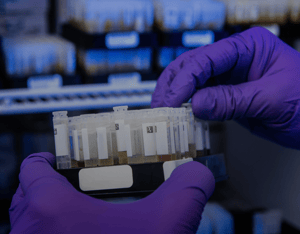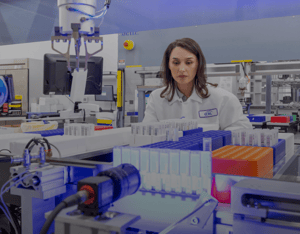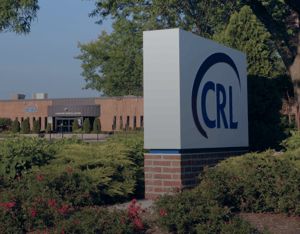Human Immunodeficiency Virus, Saliva
General Information
| Name | Information |
|---|---|
| Code: | T337 |
| Test Name, Short: | HIV , saliva |
| Matrix: | Saliva |
| Turnaround Time: | Daily |
| Analytical Method: | This test uses HIV-1 antigens, including inactivated, purified HIV-1 viral lysate proteins, which are coated onto the wells of microwell plates, for the detection of antibodies against HIV-4 |
| Reportable - Test Results Type: | Calculations must be made separately for each stripholder. Results are calculated and analyzed the same for serum, plasma, dried blood spots, and OraSure® HIV-1 specimens. A test specimen is nonreactive if specimen absorbance is less than the cutoff value. A test specimen is reactive if specimen absorbance is greater than or equal to the cutoff value. Specimens with absorbance values less than the cutoff value are considered nonreactive by the Avioq HIV-1 Microelisa System criteria and may be considered negative for antibodies to HIV-1. No further testing is required. 2. Specimens with absorbance values greater than or equal to the cutoff value are considered initially reactive by the Avioq HIV-1 Microelisa System criteria but before interpretation, the specimen should be retested in duplicate. If either duplicate retest is reactive, the specimen is considered repeatedly reactive. 3. Initially reactive specimens that do not react in both of the duplicate repeat tests are considered negative for antibodies to HIV-1. 4. If the specimen is repeatedly reactive, the probability that antibodies to HIV are present is high, especially in specimens obtained from subjects at increased risk for HIV infection.13 In addition, persons who have participated in an HIV vaccine study may develop antibodies to the vaccine and may or may not be infected with HIV. In most settings it is appropriate to investigate repeatedly reactive specimens by additional, more specific tests. Specimens found repeatedly reactive by ELISA and positive by additional, more specific tests are considered positive for antibodies to HIV-1. Clinical correlation is indicated with appropriate counseling, medical evaluation and possibly additional testing to decide whether a diagnosis of HIV infection is accurate. If interpretation of results of specimens found repeatedly reactive by ELISA and negative by additional more specific tests is unclear, further clarification may be obtained by testing another specimen obtained three to six months later. |
| Units - Conventional: | Optical Denisity |
Specimen Information
| Name | Information |
|---|---|
| Min. Volume: | The volume of oral fluid necessary for HIV-1 testing is 75 uL. However, there generally is a panel of four tests performed on oral fluid and there is a specific priority of testing when small volumes are encountered. Amylase and HIV have the first and second, then cocaine is third, and cotinine is fourth. A minimum of 190 µL of sample is required to perform all four tests. |
| Rejection Criteria: | The OraSure® HIV-1 Oral Specimen Collection Device is transported to the laboratory at ambient temperature via courier, air freight, or regular mail. OraSure specimens should be protected from impact, direct sunlight, and temperatures exceeding 37º C. Federal, state, and local regulations regarding transportation of diagnostic specimens are applicable to OraSure HIV-1 specimens. Orasure specimens, on or off pad, may be stored at 2° - 37° C for a maximum of 21 days from time of collection or frozen at -20°C or colder for 6 weeks. Specimens are processed and accessioned by the ILS setup personnel upon receipt. Specimen Storage Requirements After testing, the actual saliva testing specimen is archived and stored at 2-8 º C for one week then transferred to -20°C for another four weeks for a total of five weeks from the received date. The original swab is also kept for five weeks at room temperature. There are the following exceptions: • All swabs and the saliva specimens that have been confirmed indeterminate or positive by HIV-1 Western Blot will be stored at 2-8°C for at least one year. • Toxicology keeps initially reactive saliva cocaines and client requested confirmation saliva cotinines for one year at -20°C. • HIV/Serology will keep the swabs of the initially reactive cocaines for at least one year at room temperature. 4.4 Specimen Rejection Grossly discolored samples or specimens that have gross particulate matter should have all tests cancelled with the comment NSA in Labware. Oral Fluid samples that do not contain adequate volume should have their tests cancelled in Labware as QNS. |
| Collection Instructions: | OraSure® HIV-1 Oral Specimen Collection Device enables the collection of an oral fluid sample for use with a lab-based EIA screening test that delivers accurate results for antibodies to HIV-1. Positive screening tests are followed by an OraSure® HIV-1 Western Blot. Collect Sample Place the pad between the cheek and gum for 2-5 minutes. |
| Collection Patient Prep: | No special preparation or fasting of the patient is necessary |
| Container: | OraSure® HIV-1 Oral Specimen Collection Device |
| Shipping Temperature: | Ambient |





